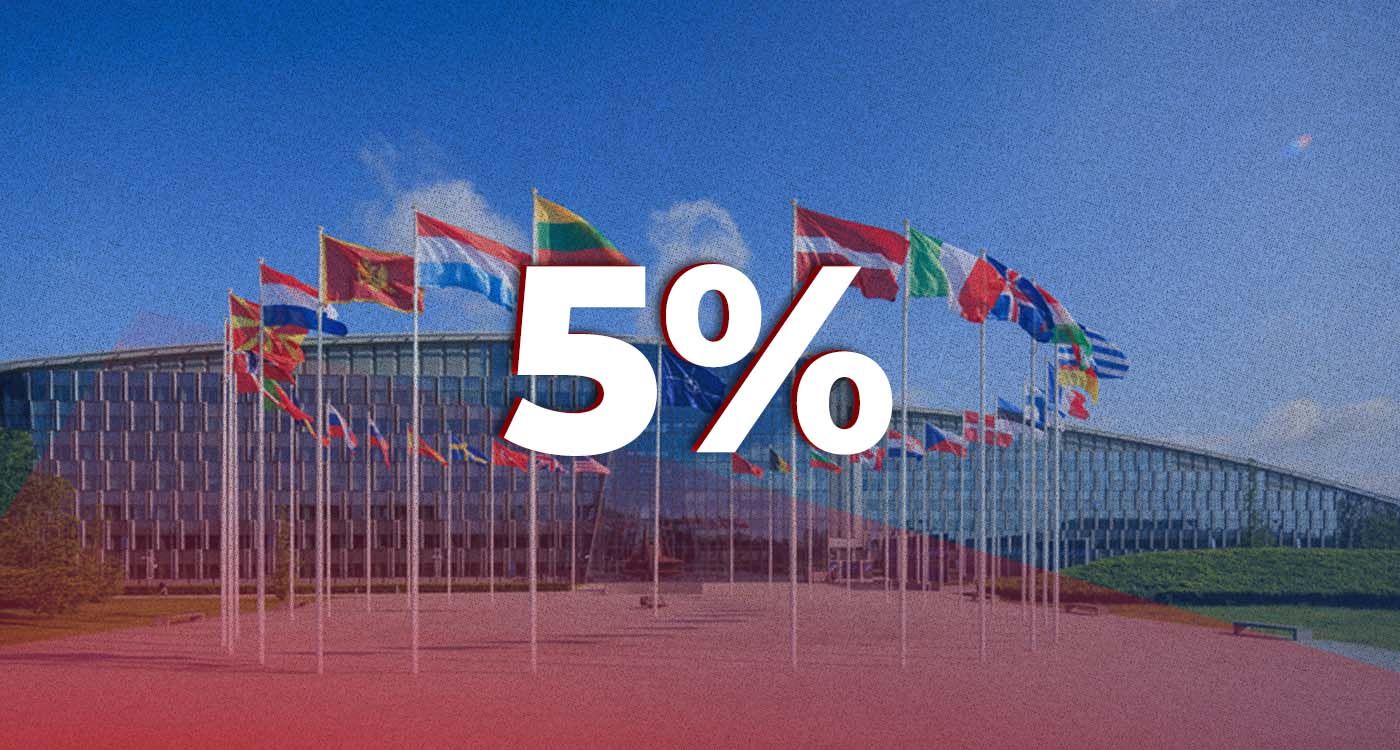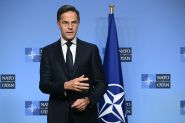- Home
- Middle East
- Trading Peace for Firepower? Europe’s Rush to Rearm

©This is Beirut
At the North Atlantic Treaty Organization (NATO) summit in The Hague, under mounting pressure from both the Russian threat and the United States’ demands, the Alliance crossed a historic threshold: member states committed to raising defense spending to 5% of GDP by 2035. But behind the bold figure lies a fractured Europe, torn between rearmament and social cohesion, geopolitical ambition and fiscal constraint.
An Ambitious Goal Amid Diverging Views
The US message was unequivocal, yet marked by contradictions. In an interview with AFP aboard his plane, President Donald Trump made clear that the 5% target was primarily aimed at NATO allies. “I think they should do it; I don’t think we should,” he said, signaling that the US, which already spends about 3.3% of its GDP on defense, does not intend to raise that figure.
NATO Secretary General Mark Rutte reflected this target in the final declaration: 3.5% for direct defense spending, including troops, armored vehicles, missiles, cybersecurity and intelligence, and 1.5% for security infrastructure, ranging from bridges to IT networks.
Support for Ukraine, deemed vital to collective security, is an integral part of this effort. The allies reaffirmed their solidarity in the final declaration: “An attack against one is an attack against all,” underscoring their commitment to Article 5 of the NATO treaty. This article states that “an armed attack against one or more of the parties in Europe or North America shall be considered an attack against them all.” “Consequently, they agree that if such an attack occurs, each of them… will assist the party or parties attacked.”
Voices of Dissent Amid the March of Rearmament
Amid a chorus of martial declarations, dissenting voices have emerged, none more forcefully than Spain’s, led by Prime Minister Pedro Sánchez. “Spending 5% of GDP on defense would be disproportionate and unnecessary,” he declared in Parliament. Sánchez warned that meeting this target would force Spain to choose between raising taxes on the middle-class or making severe cuts to the welfare state and ecological transition. Madrid plans to maintain defense spending at 2.1%, which it considers sufficient.
Budget Realities: A Steep Fiscal Climb
The numbers are stark. One-third of NATO members still fall short of the 2% defense spending target set in 2014. Belgium stands at 1.3%, with Luxembourg and Portugal only slightly higher. Even Poland, a leading rearmament advocate, manages just 4.1%.
For lagging countries, the 5% goal looms like a fiscal Everest. Belgium, for example, would need to quadruple its defense budget, from €7.4 billion to over €30 billion annually, a monumental challenge for a nation burdened by a 4% federal deficit and public debt nearing 105% of GDP.
As economist Bernard Keppenne told the Belgian press, “Talking about 5% when you can’t even reach 2% doesn’t make sense.”
Similar Dilemmas Across Europe
Clear fault lines are emerging even within governments. In Brussels, a recent core group once again failed to reach consensus: should procurement prioritize European suppliers to maximize domestic industrial benefits, or opt for the most advanced equipment, often American? Beyond the numbers, the anticipated revival of the defense industry is already fueling debates over how to divide contracts and secure supply chain sovereignty.
Financing remains a pressing question: higher taxes, increased debt or cuts to social spending? This unresolved issue promises to drive intense political debate. Belgium is not alone in grappling with this. In Germany, Friedrich Merz’s government has announced unprecedented military investments but faces strong opposition from Greens and Social Democrats,
who oppose cuts to social and climate budgets.
The United Kingdom, under Prime Minister Keir Starmer, and France, under Emmanuel Macron, have both committed to meeting the new 5% target. However, they have promised “structural adjustments” to minimize impacts on public services. This balancing act, raising military budgets while preserving social cohesion, may well become Europe’s new normal, requiring populations to accept difficult sacrifices.
A Democratic Debate Sidestepped
This major strategic shift has unfolded with remarkable silence. No public consultations, no in-depth parliamentary debates, just a decision imposed in the name of collective security, with scant attention to social and political consequences.
Yet opposition voices are growing. In The Hague, hundreds protested what they view as a dangerous march toward militarization, condemning the absurdity of investing billions in weapons amid environmental decline. “People just want to live in peace,” an Iranian protester told AFP.
Beneath the shared 5% defense spending goal, a divided Europe is taking shape, split between hawks and doves, fiscal sovereigntists and pragmatic buyers. All agree on one point: military spending will surge at an unprecedented pace, whether or not the 5% target is formally met.
Europe’s New Uniform: Defense or Burden?
The Hague compromise will have tangible consequences: it triggers a rise in military budgets but leaves deep strategic disagreements unresolved. NATO has promised oversight via annual reports but abandoned binding incremental targets, including the proposed 0.2% annual GDP increase due to a lack of consensus.
This accelerated rearmament raises urgent questions: How far are Europeans willing to go? What social sacrifices will they accept? And when will massive remilitarization cease to be a defense tool and instead become a burden, or even a trigger for instability?
Read more




Comments